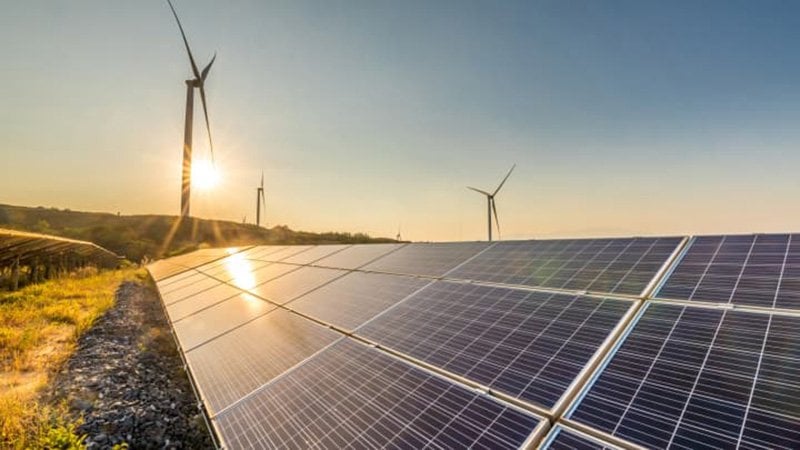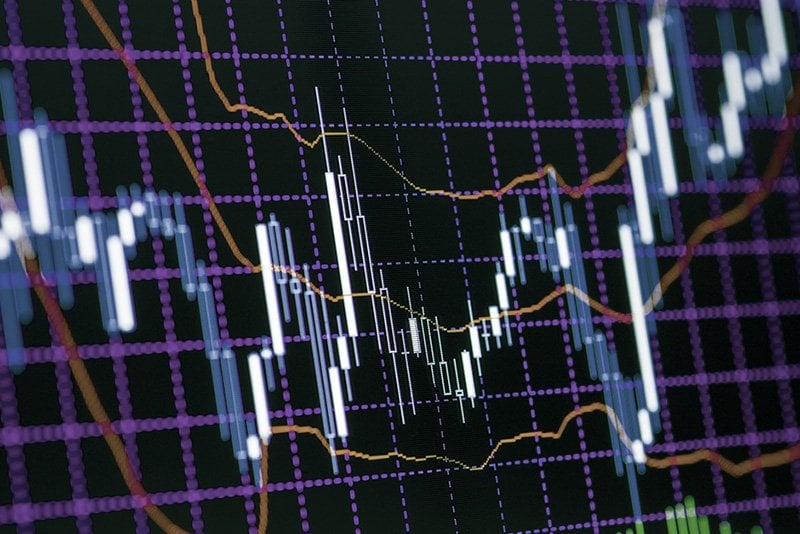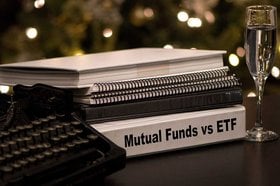10 Best Energy ETFs to Buy in 2025: Investing Tips, Pros & Cons
Energy ETFs (Exchange-Traded Funds) invest in stocks of companies in the energy sector, including oil, gas, and renewable energy companies. They usually track a specific index or sector within the energy market.
But should you invest in an energy ETF?
In this article, we’ll explore the top 10 energy ETFs and four key factors to consider before investing in them. We’ll also discuss the advantages and potential challenges of investing in these funds.
Finally, we’ll look at another lucrative alternative investment (fine wine), and how you can build a profitable wine portfolio through Vinovest.
Further reading
- Discover How to Invest in ETFs & the Pros and Cons of Investing in Them.
- Also, check out the 15 Best Alternative Investments to Diversify Your Portfolio.
Top 10 Energy ETFs to Invest (2024)
The best energy ETFs you should consider investing in are:
- Vanguard Energy ETF (NYSE: VDE)
- SPDR S&P Oil & Gas Exploration & Production ETF (NYSE: XOP)
- iShares U.S. Energy ETF (NYSE: IYE)
- Fidelity MSCI Energy Index ETF (NYSE: FENY)
- Energy Select Sector SPDR Fund (NYSE: XLE)
- Fidelity Clean Energy ETF (NYSE: FRNW)
- Alps Clean Energy ETF (NYSE: ACES)
- Invesco Solar ETF (NYSE: TAN)
- iShares Global Energy ETF (NYSE: IXC)
- Invesco DWA Energy Momentum ETF (NYSE: PXI)
1. Vanguard Energy ETF (NYSE: VDE)
The Vanguard Energy ETF is an exchange traded fund that tracks the performance of the MSCI US Investable Market Energy 25/50 Index.
It invests in various companies that focus on the exploration and production of oil, gas, and consumable fuels.

Historical 5-Year Performance
- YTD Daily Total Return: 0.29%
- Net Asset Value: $9.08 billion
- Net Expense Ratio: 0.10%
- Average Volume: 533K
- P/E Ratio: 7.70
- Yield: 4.07%
2. SPDR S&P Oil & Gas Exploration & Production ETF (NYSE: XOP)
This exchange traded fund follows the S&P Oil & Gas Exploration & Production Select Industry Index.
It gives investors access to a diverse range of companies engaged in the exploration, extraction, and production of oil and natural gas. And because it focuses primarily on oil companies, any variations in oil prices can significantly impact its performance.

Historical 5-Year Performance
- YTD Daily Total Return: 3.92%
- Net Asset Value: $3.21 billion
- Net Expense Ratio: 0.35%
- Average Volume: 4.43 million
- P/E Ratio: 4.65
- Yield: 3.02%
3. iShares U.S. Energy ETF (NYSE: IYE)
This iShares ETF tracks the investment results of the Dow Jones U.S. Oil & Gas Index. According to the fund’s prospectus, this iShares fund gives you an opportunity to invest in various funds in the U.S. energy sector.

Historical 5-Year Performance
- YTD Daily Total Return: -0.61%
- Net Asset Value: $1.33 billion
- Net Expense Ratio: 0.39%
- Average Volume: 472K
- P/E Ratio: 8.01
- Yield: 3.56%
4. Fidelity MSCI Energy Index ETF (NYSE: FENY)
The Fidelity MSCI Energy Index ETF tracks the investment results of the MSCI USA IMI Energy Index. According to the fund’s prospectus, this ETF allows you to invest in companies engaged in the exploration, production, and distribution of oil and natural gas.

Historical 5-Year Performance
- YTD Daily Total Return: 0.85%
- Net Asset Value: $1.49 billion
- Net Expense Ratio: 0.08%
- Average Volume: 844K
- P/E Ratio: 7.74
- Yield: 3.68%
5. Energy Select Sector SPDR Fund (NYSE: XLE)
The Energy Select Sector SPDR Fund tracks the performance of the Energy Select Sector Index. The index consists of companies that develop and produce crude oil, natural gas, and other energy-related services.

Historical 5-Year Performance
- YTD Daily Total Return: 0.38%
- Net Asset Value: $33.53 billion
- Net Expense Ratio: 0.10%
- Average Volume: 19.7 million
- P/E Ratio: 7.97
- Yield: 3.95%
6. Fidelity Clean Energy ETF (NYSE: FRNW)
The Fidelity Clean Energy ETF tracks the S&P Global Clean Energy Index. It invests in companies involved in the clean energy sector, as well as manufacturers of electric vehicles and other clean energy technologies.

Historical 5-Year Performance
- YTD Daily Total Return: -2.12%
- Net Asset Value: $38.51 million
- Net Expense Ratio: 0.39%
- Average Volume: 5,706
- P/E Ratio: 15.64
- Yield: 0.82%
7. Alps Clean Energy ETF (NYSE: ACES)
The Alps Clean Energy ETF exposes investors to US and Canadian companies engaged in the clean energy sector, including renewables and clean technology.
It tracks the CIBC Atlas Clean Energy Index, offering diversified investment in companies involved in multiple clean energy categories.

Historical 5-Year Performance
- YTD Daily Total Return: 5.81%
- Net Asset Value: $487.47 million
- Net Expense Ratio: 0.55%
- Average Volume: 82K
- P/E Ratio: 18.16
- Yield: 1.12%
8. Invesco Solar ETF (NYSE: TAN)
The Invesco Solar ETF tracks the investment results of the MAC Global Solar Energy Index. Investing in it gives investors access to a diversified portfolio of solar energy related companies, including solar module producers, installers, and utilities.

Historical 5-Year Performance
- YTD Daily Total Return: -4.00%
- Net Asset Value: $2.08 billion
- Net Expense Ratio: 0.69%
- Average Volume: 638K
- P/E Ratio: 15.97
- Yield: 0.00%
9. iShares Global Energy ETF (NYSE: IXC)
The iShares ETF follows the S&P Global 1200 Energy Sector Index. Investing in this iShares fund exposes you to large multinational companies with a significant role in the global energy sector.

Historical 5-Year Performance
- YTD Daily Total Return: 2.42%
- Net Asset Value: $1.77 billion
- Net Expense Ratio: 0.40%
- Average Volume: 507K
- P/E Ratio: 7.14
- Yield: 4.87%
10. Invesco DWA Energy Momentum ETF (NYSE: PXI)
The Invesco DWA Energy Momentum ETF tracks the Dorsey Wright Energy Technical Leaders Index. With this fund, you can potentially gain access to some of the world’s top-performing energy companies.

Historical 5-Year Performance
- YTD Daily Total Return: 0.66%
- Net Asset Value: $77.04 million
- Net Expense Ratio: 0.60%
- Average Volume: 19,959
- P/E Ratio: 6.64
- Yield: 3.76%
But before you place your bets on energy ETFs, how do you decide which ones you should invest in?Let’s find out.
4 Key Factors to Consider When Investing in Energy ETFs
The following are the four critical factors to keep in mind when putting your money into energy ETFs:
1. Your Investment Goals

Setting investment goals is a critical step in determining your investment strategy. Your goals will depend on your:
- Personal financial situation
- Time horizon
- Risk tolerance
- Broader financial objectives
- Appetite for sustainable investing (If you want to support the transition to green energy, you could consider ETFs focused on renewable energy companies.)
- Hedging against inflation (Energy prices often rise during periods of inflation – so, investing in Energy ETFs might be a good inflation hedge.)
2. ETF Assets Under Management (AUM)

Assets Under Management (AUM) represents the total market price of the holdings that a person (like a mutual fund manager) or entity manages on behalf of clients.
Energy ETFs with higher AUM will have higher trading volumes. This helps you buy and sell shares easily. Also, ETFs with larger AUM can often operate more efficiently, leading to lower expense ratios.
3. Performance History of the ETF

An Energy ETF's performance history gives you an idea of how the fund has performed over time under different market conditions. While past performance does not indicate future results, a consistent track record of solid returns can be a positive sign.
Additionally, a fund that consistently outperforms its benchmark (a specific energy sector index for an Energy ETF) may be viewed favorably.
4. Expense Ratio and Fees of the ETF

Expense ratios and fees can significantly impact the net return of any investment, including Energy ETFs. They represent the costs of operating an ETF (or mutual fund) and are deducted from the assets of the fund.
High expenses can eat into your returns, especially over the long term. For instance, if an ETF has a return of 7% and an expense ratio of 0.5%, your net return (before taxes) would be 6.5%.
3 Benefits of Investing in Energy ETFs
You can expect these advantages when you invest in energy ETFs:
1. Portfolio Diversification

ETFs often include a broad array of securities, allowing you to diversify your holdings within the energy sector. This can help reduce risk because poor performance by a single company may be offset by better performance elsewhere in the ETF.
Also, investing in energy ETFs is an easy way to diversify your portfolio with other assets besides individual stocks.
2. Exposure to the Energy Sector

Energy ETFs provide you access to the entire energy sector, including oil, gas, renewable energy, and utilities. As energy demand continues to grow globally and the world transitions toward sustainable energy (or green energy sources), this sector could offer significant opportunities for growth.
However, the switch to alternative energy might undermine the growth of the conventional energy sector. So, choose your investment options after careful analysis of the market conditions.
3. Potentially High Returns

Energy ETFs (and energy stocks) can act as a hedge against inflation. During inflationary periods, energy prices often rise. This potentially leads to higher profits for energy companies and lucrative returns for investors.
Also, the rising use of alternative energy (or limiting the use of fossil fuels) can boost clean energy companies profitability and the value of clean energy ETFs.
Meanwhile, you can expect better future results from Energy ETFs focused on companies that pay dividends.
3 Challenges of Investing in Energy ETFs
Investing in energy ETFs comes with a set of risks as well!
1. Commodity Price Volatility

The profitability of energy companies is directly tied to the price of the energy commodities they produce or use.
When prices are high, these companies can sell their products at higher prices and increase their profit. But when commodity prices fall, their revenue and profit decline.
This can affect the value of an Energy ETF that holds these companies' energy stocks.
2. Geopolitical Risks

Any political unrest or conflict in an energy-rich region could disrupt the supply of energy commodities, such as oil or natural gas.
For instance, war, sanctions, or political instability in the Middle East can cause volatility in global oil prices. Energy ETFs that include companies heavily dependent on such supplies could be affected.
3. Regulatory Issues

Government policies related to the energy sector can change due to environmental concerns, economic needs, or political considerations.
Additionally, regulatory issues around permits for exploration, drilling, or building new infrastructure can disrupt energy companies from operating and making a profit.
So, how do you counter the risks associated with energy ETFs?
You can diversify your holdings with another attractive alternative asset like fine wine.
Let’s see what makes it an excellent investment choice.
Fine Wine Investment: A Lucrative Alternative

Fine wine yielded 20.54% returns in 2022, outperforming the S&P 500, which had a lackluster return of -18.11%. Besides such handsome gains, here are some other benefits of investing in wine:
- Wine investment relies exclusively on supply and demand and remains unaffected by volatile market conditions. In 2022, wine remained much less volatile (3.60%) than the S&P 500 stocks (21.16%).
- A premium vintage wine fetches substantial profit over time, making it an exceptional asset with immense passive fixed income potential.
- Online platforms like Vinovest have simplified wine investment, making it accessible to everyone.
- High-end vintage wines have also been top performers at several auction events, yielding incredible returns. For instance, a 6-liter bottle of Cheval Blanc 1947 was sold for an incredible $304,375 at a Christie’s auction in 2010.
If you’re eager to reap the benefits of wine investment, you can get started at Vinovest.
Invest in Top-Notch Wines Through Vinovest

Vinovest is an AI-based wine investment platform offering a convenient and safe way to build a high-return portfolio of world-class wines from prestigious wine regions.
Besides, Vinovest offers:
- Low Overall Costs: Vinovest charges a 2.5% annual fee (1.9% for a portfolio over $50,000). This covers wine buying, storage, authentication, a full insurance policy at market value, portfolio management, and selling.
- No Intermediaries: You don’t have to negotiate with intermediaries, as Vinovest sources your bottles directly from wineries, auction events, and wine exchanges.
- Hassle-Free Ownership: Vinovest authenticates, stores, and insures your wine bottles for you, simplifying the ownership process.
- Expert Assistance: You can pick the most profitable bottles for your collection thanks to the investment advice of Vinovest's expert team of sommeliers.
Ready to start your wine investment journey?
Sign up with Vinovest today and start investing in the best wines from around the world!



